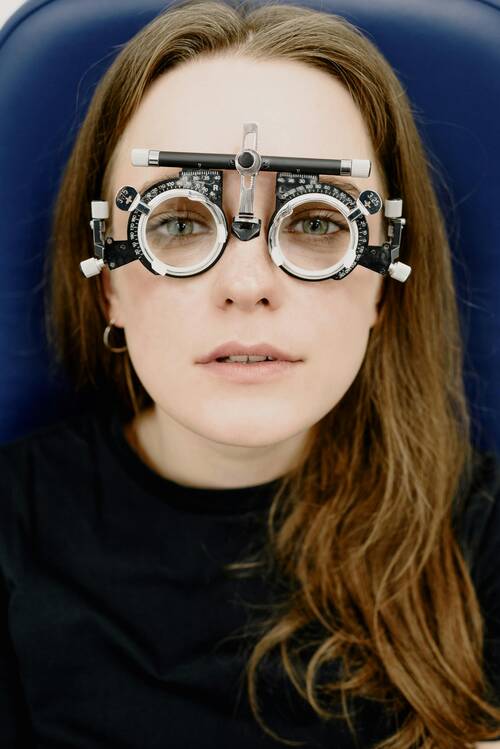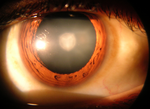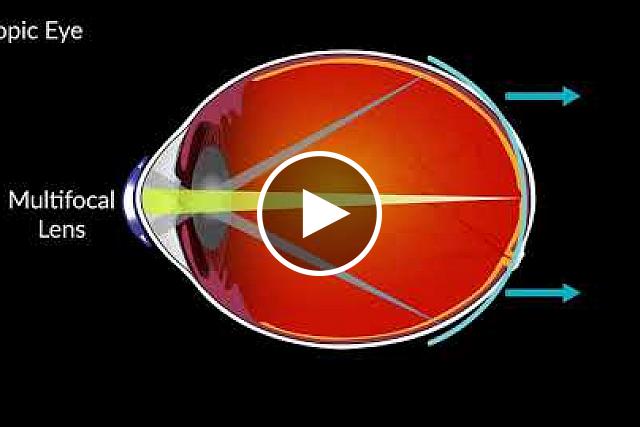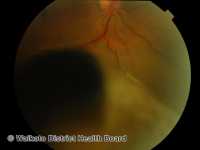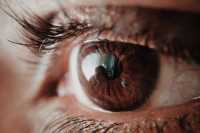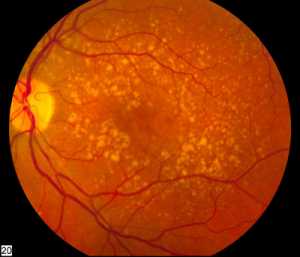If you have diabetes, you’re at risk for several eye conditions, including diabetic retinopathy, which is damage to the blood vessels...
Maintaining sound eye health requires knowledge of common eye disorders. Hyperopia (farsightedness) and myopia (nearsightedness) affect our ability to see close things. Another common problem is astigmatism, which results in blurry vision because of unevenly shaped corneas. The age-related disorder, presbyopia, affects one's capacity to focus on near objects. Older persons frequently get cataracts, which cloud the eye's lens, while glaucoma causes elevated eye pressure that may cause vision loss. For early identification and treatment, as well as to maintain overall eye health and vision, routine eye exams are crucial.
Regular Eye Check-Ups
Regular eye check-ups are among the most critical steps in maintaining optimal vision. These visits help detect potential eye problems early and ensure your eyes are healthy. Consulting with eye doctors in Newtown, PA, can provide personalized care and recommendations for your vision needs.
Eye check-ups often include tests measuring visual acuity, depth perception, eye alignment, and movement. These tests are designed to detect abnormalities early, such as glaucoma, cataracts, and macular degeneration. Catching these conditions in their initial stages can be crucial for effective treatment and preventing long-term damage. For instance, detecting glaucoma early can allow for treatments that reduce intraocular pressure and prevent further optic nerve damage.
(more…)
Author Interviews, JAMA, Ophthalmology, USPSTF / 02.06.2022
USPSTF: Glaucoma Screening Recommendation Statement
MedicalResearch.com Interview with:
Katrina Donahue, M.D., M.P.H.
Professor and vice chair of research
Department of Family Medicine
University of North Carolina at Chapel Hill
Dr. Donohue is a family physician and senior research fellow
Cecil G. Sheps Center for Health Services Research
Dr. Donahue joined the U.S. Preventive Services Task Force in January 2020.
MedicalResearch.com: What is the background for this study? What are the main findings?
Response: Impaired vision and glaucoma are serious and common conditions facing millions of people nationwide that can affect a person’s independence and quality of life. These recommendations looked at how primary care clinicians can help people who have not noticed any problems with their vision. Unfortunately, there is not enough evidence available to make a recommendation for or against screening adults for glaucoma or older adults for impaired vision in the primary care setting.
(more…)
Author Interviews, Ophthalmology, Technology / 01.04.2022
Breakthrough for Nearsightedness: Removable Lens Implant Can Provide Freedom from Glasses or Contacts
MedicalResearch.com Interview with:
Scott D. Barnes, MD
Chief Medical Officer
STAAR Surgical
 MedicalResearch.com: What is the background for the EVO procedure? Would you briefly describe what is meant by myopia and how common it is?
Response: EVO is a clinically-proven implantable lens that corrects common vision problems such as nearsightedness and nearsightedness with astigmatism. EVO can be the solution for people who want to get rid of their glasses or contact lenses. Myopia (or nearsightedness) is the most common ocular disorder worldwide and its incidence is increasing significantly. An estimated 30% of the world's population, or 2.6 billion people, have myopia and this number is projected to rise to 50% of the global population by the year 2050.
(more…)
MedicalResearch.com: What is the background for the EVO procedure? Would you briefly describe what is meant by myopia and how common it is?
Response: EVO is a clinically-proven implantable lens that corrects common vision problems such as nearsightedness and nearsightedness with astigmatism. EVO can be the solution for people who want to get rid of their glasses or contact lenses. Myopia (or nearsightedness) is the most common ocular disorder worldwide and its incidence is increasing significantly. An estimated 30% of the world's population, or 2.6 billion people, have myopia and this number is projected to rise to 50% of the global population by the year 2050.
(more…)
 MedicalResearch.com: What is the background for the EVO procedure? Would you briefly describe what is meant by myopia and how common it is?
Response: EVO is a clinically-proven implantable lens that corrects common vision problems such as nearsightedness and nearsightedness with astigmatism. EVO can be the solution for people who want to get rid of their glasses or contact lenses. Myopia (or nearsightedness) is the most common ocular disorder worldwide and its incidence is increasing significantly. An estimated 30% of the world's population, or 2.6 billion people, have myopia and this number is projected to rise to 50% of the global population by the year 2050.
(more…)
MedicalResearch.com: What is the background for the EVO procedure? Would you briefly describe what is meant by myopia and how common it is?
Response: EVO is a clinically-proven implantable lens that corrects common vision problems such as nearsightedness and nearsightedness with astigmatism. EVO can be the solution for people who want to get rid of their glasses or contact lenses. Myopia (or nearsightedness) is the most common ocular disorder worldwide and its incidence is increasing significantly. An estimated 30% of the world's population, or 2.6 billion people, have myopia and this number is projected to rise to 50% of the global population by the year 2050.
(more…)
Alzheimer's - Dementia, Author Interviews, JAMA, Ophthalmology / 06.12.2021
Cataract Surgery Linked to Lower Risk of Dementia
MedicalResearch.com Interview with:
Cecilia S. Lee, MD, MS
Associate Professor,Director, Clinical Research
Department of Ophthalmology
Harborview Medical Center
University of Washington Seattle, WA
MedicalResearch.com: What is the background for this study?
Response: Cataract is a natural aging process of the eye and affects the majority of older adults who are at risk for dementia. Sensory loss, including vision and hearing, is of interest to the research community as a possible risk factor for dementia, and also as a potential point of intervention. Because cataract surgery improves visual function, we hypothesized that older people who undergo cataract surgery may have a decreased risk of developing Alzheimer disease and dementia.
We used the longitudinal data from an ongoing, prospective, community based cohort, Adult Changes in Thought (ACT) study. The ACT study includes over 5000 participants to date who are dementia free at recruitment and followed until they develop Alzheimer disease or dementia. We had access to their extensive medical history including comprehensive ophthalmology visit data. We investigated whether cataract surgery was associated with a decreased risk of developing Alzheimer disease and dementia. (more…)
Author Interviews, JAMA, Ophthalmology, Pediatrics / 11.08.2020
Contact Lenses in Childhood May Slow Development of Nearsightedness
MedicalResearch.com Interview with:
Jeffrey J. Walline, OD PhD
Associate Dean for Research
The Ohio State University
Columbus, OH 43210-1240
MedicalResearch.com: What is the background for this study?
Response: Greater amounts of nearsightedness are related to higher risks of sight-threatening complications in adulthood, so anything we can do to slow the progression of nearsightedness in childhood can have meaningful benefits in the future.
As the prevalence of nearsightedness increases worldwide and affects approximately 1/3 of the people in the United States, a treatment that provides clear vision AND slows the progression of nearsightedness can have a profound effect.
(more…)
Author Interviews, Ophthalmology / 30.07.2020
Wet AMD: Genentech’s Port Delivery System Can Allow Longer Intervals Between Ranibizumab Treatments
MedicalResearch.com Interview with:
 Carl D. Regillo, MD, FACS
Chief, Retina Service
Wills Eye Hospital
MedicalResearch.com: What is the background for the Phase III Archway study? Would you briefly explain what Neovascular Age-Related Macular Degeneration means?
Genentech announced in late July the results from the Phase III Archway study evaluating Port Delivery System (PDS) with ranibizumab (PDS) in people living with neovascular or “wet” age-related macular degeneration (nAMD) which showed PDS enabled 98.4% of people to go six months between treatments, while achieving vision outcomes equivalent to those receiving monthly ranibizumab eye injections, a current standard of care.
AMD is a condition that affects the part of the eye that provides sharp, central vision needed for activities like reading and is a leading cause of blindness for people age 60 and over in the U.S. Neovascular AMD is an advanced form of AMD that can cause rapid and severe vision loss. Approximately 11 million people in the United States have some form of AMD and of those, about 1.1 million have nAMD.
(more…)
Carl D. Regillo, MD, FACS
Chief, Retina Service
Wills Eye Hospital
MedicalResearch.com: What is the background for the Phase III Archway study? Would you briefly explain what Neovascular Age-Related Macular Degeneration means?
Genentech announced in late July the results from the Phase III Archway study evaluating Port Delivery System (PDS) with ranibizumab (PDS) in people living with neovascular or “wet” age-related macular degeneration (nAMD) which showed PDS enabled 98.4% of people to go six months between treatments, while achieving vision outcomes equivalent to those receiving monthly ranibizumab eye injections, a current standard of care.
AMD is a condition that affects the part of the eye that provides sharp, central vision needed for activities like reading and is a leading cause of blindness for people age 60 and over in the U.S. Neovascular AMD is an advanced form of AMD that can cause rapid and severe vision loss. Approximately 11 million people in the United States have some form of AMD and of those, about 1.1 million have nAMD.
(more…)
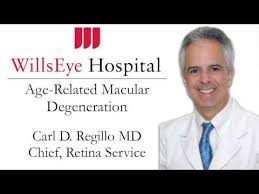 Carl D. Regillo, MD, FACS
Chief, Retina Service
Wills Eye Hospital
MedicalResearch.com: What is the background for the Phase III Archway study? Would you briefly explain what Neovascular Age-Related Macular Degeneration means?
Genentech announced in late July the results from the Phase III Archway study evaluating Port Delivery System (PDS) with ranibizumab (PDS) in people living with neovascular or “wet” age-related macular degeneration (nAMD) which showed PDS enabled 98.4% of people to go six months between treatments, while achieving vision outcomes equivalent to those receiving monthly ranibizumab eye injections, a current standard of care.
AMD is a condition that affects the part of the eye that provides sharp, central vision needed for activities like reading and is a leading cause of blindness for people age 60 and over in the U.S. Neovascular AMD is an advanced form of AMD that can cause rapid and severe vision loss. Approximately 11 million people in the United States have some form of AMD and of those, about 1.1 million have nAMD.
(more…)
Carl D. Regillo, MD, FACS
Chief, Retina Service
Wills Eye Hospital
MedicalResearch.com: What is the background for the Phase III Archway study? Would you briefly explain what Neovascular Age-Related Macular Degeneration means?
Genentech announced in late July the results from the Phase III Archway study evaluating Port Delivery System (PDS) with ranibizumab (PDS) in people living with neovascular or “wet” age-related macular degeneration (nAMD) which showed PDS enabled 98.4% of people to go six months between treatments, while achieving vision outcomes equivalent to those receiving monthly ranibizumab eye injections, a current standard of care.
AMD is a condition that affects the part of the eye that provides sharp, central vision needed for activities like reading and is a leading cause of blindness for people age 60 and over in the U.S. Neovascular AMD is an advanced form of AMD that can cause rapid and severe vision loss. Approximately 11 million people in the United States have some form of AMD and of those, about 1.1 million have nAMD.
(more…)
Author Interviews, Cancer Research, Melanoma, Nature / 21.05.2020
Genes Linked to Melanoma of the Eye Identified
MedicalResearch.com Interview with:
Dr. Kelly Brooks PhD
Research Officer
QIMR Berghofer Medical Research Institute
MedicalResearch.com: What is the background for this study?
Response: There are approximately 175 new cases a year for melanomas inside the eye called uveal melanomas. These cancers spread to other sites of the body in about half of patients. Uveal melanomas are very different to skin melanomas and so far no effective treatment have been approved to treat uveal melanoma once it has spread.
We sequenced uveal melanoma tumours from over 100 different patients to look at what mutations are responsible for tumour growth and development. (more…)
Author Interviews, Cognitive Issues, Mediterranean Diet, NIH / 21.04.2020
Effect of Mediterranean Diet on Cognitive Function in Patients with Age-Related Eye Disease
MedicalResearch.com Interview with:
Emily Y. Chew, M.D.
Director of the Division of Epidemiology and Clinical Applications
Deputy Clinical Director at the National Eye Institute (NEI),
National Institutes of Health
MedicalResearch.com: What is the background for this study?
Response: Dementia is a common disorder that was estimated to have a worldwide prevalence of 44 million in 2016 and is projected to hit 115 million by 2050. Many phase 3 trials of various therapies have failed and we have no treatment currently available for the prevention or reduction of the course of dementia. A slow neurocognitive decline throughout life is part of the normal process of aging. However, there is a subset of individuals who may have accelerated aging and is at high risk of development dementia. If the course of such accelerated decline could be altered in any way, it would be important to evaluate. The role of diet with biologic aging has been studied and diet has been also found to be associated with age-related conditions linked to dementia, including cardiovascular disease and diabetes.
We were interested in the cognitive function of our participants who had another neurodegenerative disease, age-related macular degeneration (AMD). We had conducted two randomized controlled clinical trials designed to evaluate the role of oral supplements for the treatment of AMD. We also studied cognitive function in both clinical trials of nearly 8,000 participants who were followed for 10 years. We also evaluated the dietary habits of the participants with food frequency questionnaires (FFQ) at baseline. Cognitive function testing was conducted in the first study, the Age-Related Eye Disease Study (AREDS) near the end of the clinical trial while the AREDS2, the second study, evaluated cognitive function testing at baseline and every 2 years until year 6. AREDS study evaluated cognitive function with in-clinic study visits while AREDS2 was conducted using telephone interviews.
Our aim was to determine whether closer adherence to the alternative Mediterranean diet (aMED) was associated with impaired cognitive function these two studies. We were interested in the particular components of the Mediterranean diet that may be important. We also evaluated the interaction of genetics with the diet. (more…)
Accidents & Violence, Author Interviews, JAMA, Ophthalmology, Pediatrics / 13.04.2020
Bottle Rockets Cause Most Devastating Fireworks Injuries to Eye
MedicalResearch.com Interview with:
Natasha Nayak Kolomeyer, MD
Glaucoma Service, Wills Eye Hospital
Co-authors:
Eric J. Shiuey, MS
Sidney Kimmel Medical College, Thomas Jefferson University
Anton M. Kolomeyer, MD, PhD
Scheie Eye Institute, Department of Ophthalmology, University of Pennsylvania
Philadelphia, Pennsylvania
MedicalResearch.com: What is the background for this study?
Response: I still remember the 6-year-old boy that was brought in to our emergency room on July 4th with a ruptured globe (severe eye trauma) due to fireworks; he permanently lost vision in that eye despite surgery. This is not a rare occurrence especially around certain holidays.
(more…)
Author Interviews, COVID -19 Coronavirus, Duke / 27.03.2020
Little Evidence COVID-19 Can Be Spread Through Tears
MedicalResearch.com Interview with:
Dr. Rupesh Agrawal, MD
Associate Professor
Senior Consultant Ophthalmologist
Duke-NUS Medical School, Singapore
MedicalResearch.com: What is the background for this study?
Wasn't Dr Li Wenliang, the Chinese physician who first alerted his community of coronavirus an opthalmologist, with possible exposure to tears from this surgical work with glaucoma patients?
Response: Since the start of the pandemic, there have been multiple reports which suggested the transmission of SARS-CoV-2 via ocular fluids. As ophthalmologists, we come into close contact with tears on a daily basis during our clinical examination. Furthermore, many equipment in the clinic like the Goldman tonometer come into direct contact with such ocular fluids, providing a channel for viral transmission. The evidence, as of date, were mainly anecdotal reports included in newspaper articles and media interviews. We wanted to know if the virus can truly be found in tears, so we decided to embark on this study. (more…)
Author Interviews, Genetic Research, JAMA, Ophthalmology / 02.11.2019
Association Between Polygenic Risk Score and Risk of Myopia
MedicalResearch.com Interview with:
 Professor Jeremy A. Guggenheim
School of Optometry & Vision Sciences
Cardiff University, UK
MedicalResearch.com: What is the background for this study?
Response: Near-sightedness (myopia) usually develops during childhood and necessitates the use of glasses or contact lenses to correct blurry distance vision. It is also a risk factor for sight-threatening disorders such as glaucoma, retinal detachment and macular degeneration. Promising treatments designed to slow the progression of myopia are becoming available. Building on previous research suggesting that some individuals are genetically predisposed to near-sightedness, we investigated whether a genetic test could identify children at risk of developing myopia. (more…)
Professor Jeremy A. Guggenheim
School of Optometry & Vision Sciences
Cardiff University, UK
MedicalResearch.com: What is the background for this study?
Response: Near-sightedness (myopia) usually develops during childhood and necessitates the use of glasses or contact lenses to correct blurry distance vision. It is also a risk factor for sight-threatening disorders such as glaucoma, retinal detachment and macular degeneration. Promising treatments designed to slow the progression of myopia are becoming available. Building on previous research suggesting that some individuals are genetically predisposed to near-sightedness, we investigated whether a genetic test could identify children at risk of developing myopia. (more…)
 Professor Jeremy A. Guggenheim
School of Optometry & Vision Sciences
Cardiff University, UK
MedicalResearch.com: What is the background for this study?
Response: Near-sightedness (myopia) usually develops during childhood and necessitates the use of glasses or contact lenses to correct blurry distance vision. It is also a risk factor for sight-threatening disorders such as glaucoma, retinal detachment and macular degeneration. Promising treatments designed to slow the progression of myopia are becoming available. Building on previous research suggesting that some individuals are genetically predisposed to near-sightedness, we investigated whether a genetic test could identify children at risk of developing myopia. (more…)
Professor Jeremy A. Guggenheim
School of Optometry & Vision Sciences
Cardiff University, UK
MedicalResearch.com: What is the background for this study?
Response: Near-sightedness (myopia) usually develops during childhood and necessitates the use of glasses or contact lenses to correct blurry distance vision. It is also a risk factor for sight-threatening disorders such as glaucoma, retinal detachment and macular degeneration. Promising treatments designed to slow the progression of myopia are becoming available. Building on previous research suggesting that some individuals are genetically predisposed to near-sightedness, we investigated whether a genetic test could identify children at risk of developing myopia. (more…)
Author Interviews, Ophthalmology, Technology / 21.10.2019
Glaucoma Visual Functional Progression Can Be Monitored Using AI-Enabled Radar
MedicalResearch.com Interview with:
Louis R. Pasquale, MD
Professor of Ophthalmology
Icahn School of Medicine at Mount Sinai;
Site Chair of the Department of
Ophthalmology at The Mount Sinai Hospital and Mount Sinai Queens;
Vice Chair of Translational Ophthalmology Research
Mount Sinai Health System
MedicalResearch.com: What is the background for this study? What are the main findings?
Response: Individual visual field tests provide a 52-point array of functional information about a glaucoma patient but it does not give us a handle on how functionally disabled they might be. A series of visual field tests need to be assessed for functional progression but current conventional algorithms for doing so are governed by ad hoc rules and the various algorithms available for assessing progression do not agree with one another. Finally, in managed care setting where one might be responsible for allocating resources for large numbers of glaucoma patients, it would be valuable to quickly visualize which patients are progressing rapidly and which ones are stable. This could allow for proper allocation of resources and perhaps inquiry into why a subset of patients are doing poorly.
We wanted to develop an easy to use tool to quickly visualize how individual glaucoma patients and how groups of glaucoma patients are doing from a functional perspective.
(more…)
Author Interviews, Chocolate, Ophthalmology / 26.09.2019
Study Finds Dark Chocolate Did Not Improve Vision
MedicalResearch.com Interview with:
Dr. med. Jakob Siedlecki MD
Department of Ophthalmology
Ludwig-Maximilians-University
Munich, Germany
MedicalResearch.com: What is the background for this study?
Response: The background is that a previous study has found beneficial effects of dark chocolate on visual function. This finding was attributed to improved blood supply due to vasodilation induced by Flavanols in dark chocolate. (more…)
Author Interviews, BMJ, Environmental Risks, Ophthalmology / 21.08.2019
Air Pollution from Traffic Linked to Age-Related Macular Degeneration
MedicalResearch.com Interview with:
Professor Suh-Hang Hank Ju, PhD
Kaohsiung Medical University
Taiwan
MedicalResearch.com: What is the background for this study?
Response: Nitrogen dioxide (NO2) and carbon monoxide (CO) are 2 major traffic pollutants, which have been shown to increase a risk for respiratory and cardiovascular diseases. We previously showed that chronic exposure of NO2 is also associated with dementia. age-related macula degeneration (AMD) is a leading cause of blindness.
Given the increase of traffic pollutants in many urbanized cities, we investigated whether these two traffic pollutants are associated with the development of age-related macula degeneration in Taiwan.
(more…)
Author Interviews, CDC, Infections, Ophthalmology / 20.08.2019
Many Contact Lens Wearers Don’t Recall Receiving Care Instructions
MedicalResearch.com Interview with:
Nuadum Konne
Waterborne Disease Prevention Branch
CDC
MedicalResearch.com: What is the background for this study? What are the main findings?
Response: An estimated 45 million Americans enjoy the benefits of contact lens wear. Most of them practice some behaviors that put them at risk for serious eye infections.
Surveys of contact lens wearers and eye care providers were conducted in 2018. One third of lens wearers recalled never hearing any lens care recommendations.
Most eye care providers reported sharing recommendations always or most of the time.
(more…)
Author Interviews, Diabetes, Ophthalmology / 20.05.2019
Teleretinal Imaging Improves Detection of Diabetic Retinopathy in Low Resource Setting
MedicalResearch.com Interview with:
Thulasiraj Ravilla
Executive Director – LAICO &
Director – Opeations
Aravind Eye Care System
Tamilnadu, India
MedicalResearch.com: What is the background for this study? What are the main findings?
Response: Diabetic Retinopathy (DR) is a visual consequence of diabetes and various other studies have reported that in India, 10% to 30% of adults with diabetes have DR, with higher rates found in older people and urban areas. Undetected DR leads to vision loss and eventually blindness. Thus early identification of DR is critical to initiate appropriate treatment to reduce the rate of vision loss.
Conventional approaches of requesting diabetologists to refer patients with diabetes to an ophthalmologist has been ineffective due to compliance issues, both by the diabetologists and the patients. Similarly screening through outreach eye camps have not been found to be effective in India and other developing countries owing to inadequate eye care resources. Teleretinal screening for Diabetic Retinopathy is increasingly being used in India. Evidence from randomized clinical trials on the benefits of teleretinal screening is limited. Whatever evidence is there are from high income countries, which often have little relevance to developing countries.
(more…)
Author Interviews, JAMA, Ophthalmology / 09.11.2018
Which Questionnaires Best Reflect Dry Eye Symptoms?
MedicalResearch.com Interview with:
 Jennifer P. Craig, Associate Professor
Department of Ophthalmology
New Zealand National Eye Centre
Auckland, New Zealand
MedicalResearch.com: What is the background for this study?
Response: Dry eye disease is a complex multi-factorial condition, which affects between 5% to 50% of the adult population in different parts of the world. The condition can have profound effects on the ocular comfort, visual function, and quality of life of sufferers. In both clinical practice and academic research settings, validated questionnaires are frequently used to screen for dry eye symptomology, before clinical assessment of tear film homeostatic markers is conducted to make an overall diagnosis of dry eye disease.
Although a large number of validated symptomology questionnaires has previously been developed, the recently convened Tear Film and Ocular Surface Dry Eye Workshop II (TFOS DEWS II) identified that the considerable heterogeneities in the study populations, methodologies, and reference standards used in earlier diagnostic accuracy studies introduced significant challenges when trying to compare the diagnostic performance of these screening instruments.
The current study is the first to offer a direct comparison of five commonly used validated questionnaires within the same study population, and uses the global consensus criteria for tear film homeostatic disturbance developed by the TFOS DEWS II as the reference standard.
(more…)
Jennifer P. Craig, Associate Professor
Department of Ophthalmology
New Zealand National Eye Centre
Auckland, New Zealand
MedicalResearch.com: What is the background for this study?
Response: Dry eye disease is a complex multi-factorial condition, which affects between 5% to 50% of the adult population in different parts of the world. The condition can have profound effects on the ocular comfort, visual function, and quality of life of sufferers. In both clinical practice and academic research settings, validated questionnaires are frequently used to screen for dry eye symptomology, before clinical assessment of tear film homeostatic markers is conducted to make an overall diagnosis of dry eye disease.
Although a large number of validated symptomology questionnaires has previously been developed, the recently convened Tear Film and Ocular Surface Dry Eye Workshop II (TFOS DEWS II) identified that the considerable heterogeneities in the study populations, methodologies, and reference standards used in earlier diagnostic accuracy studies introduced significant challenges when trying to compare the diagnostic performance of these screening instruments.
The current study is the first to offer a direct comparison of five commonly used validated questionnaires within the same study population, and uses the global consensus criteria for tear film homeostatic disturbance developed by the TFOS DEWS II as the reference standard.
(more…)
 Jennifer P. Craig, Associate Professor
Department of Ophthalmology
New Zealand National Eye Centre
Auckland, New Zealand
MedicalResearch.com: What is the background for this study?
Response: Dry eye disease is a complex multi-factorial condition, which affects between 5% to 50% of the adult population in different parts of the world. The condition can have profound effects on the ocular comfort, visual function, and quality of life of sufferers. In both clinical practice and academic research settings, validated questionnaires are frequently used to screen for dry eye symptomology, before clinical assessment of tear film homeostatic markers is conducted to make an overall diagnosis of dry eye disease.
Although a large number of validated symptomology questionnaires has previously been developed, the recently convened Tear Film and Ocular Surface Dry Eye Workshop II (TFOS DEWS II) identified that the considerable heterogeneities in the study populations, methodologies, and reference standards used in earlier diagnostic accuracy studies introduced significant challenges when trying to compare the diagnostic performance of these screening instruments.
The current study is the first to offer a direct comparison of five commonly used validated questionnaires within the same study population, and uses the global consensus criteria for tear film homeostatic disturbance developed by the TFOS DEWS II as the reference standard.
(more…)
Jennifer P. Craig, Associate Professor
Department of Ophthalmology
New Zealand National Eye Centre
Auckland, New Zealand
MedicalResearch.com: What is the background for this study?
Response: Dry eye disease is a complex multi-factorial condition, which affects between 5% to 50% of the adult population in different parts of the world. The condition can have profound effects on the ocular comfort, visual function, and quality of life of sufferers. In both clinical practice and academic research settings, validated questionnaires are frequently used to screen for dry eye symptomology, before clinical assessment of tear film homeostatic markers is conducted to make an overall diagnosis of dry eye disease.
Although a large number of validated symptomology questionnaires has previously been developed, the recently convened Tear Film and Ocular Surface Dry Eye Workshop II (TFOS DEWS II) identified that the considerable heterogeneities in the study populations, methodologies, and reference standards used in earlier diagnostic accuracy studies introduced significant challenges when trying to compare the diagnostic performance of these screening instruments.
The current study is the first to offer a direct comparison of five commonly used validated questionnaires within the same study population, and uses the global consensus criteria for tear film homeostatic disturbance developed by the TFOS DEWS II as the reference standard.
(more…)
Author Interviews, Diabetes, JAMA, Ophthalmology, Technology / 06.10.2018
AI Screening for Diabetic Eye Disease May Save Time and Money
The results demonstrate both the potential and the challenges of using AI systems to identify diabetic retinopathy in clinical practice....
Author Interviews, Ophthalmology / 09.06.2018
Shire Launches ‘Screen Responsibly’ To Reduce Dry Eye Symptoms
MedicalResearch.com Interview with:
 Michelle Nguyen
Senior Director, Consumer Marketing Lead Shire
Ophthalmics
MedicalResearch.com: What is the background for this initiative? How does screen time affect eye health?
Response: Screen responsibly is an educational initiative about the intersection between our screen use and eye health. This initiative is underscored by new national survey data and aimed at increasing our dialogue about how to love both our screens and our eyes. Screen responsibly is an extension of the eyelove campaign, which Shire launched in 2016 to elevate the importance of eye health and raise awareness of the signs and symptoms of Chronic Dry Eye, commonly referred to as Dry Eye. Since being glued to your screen can trigger Dry Eye symptoms, it is important that people are aware of ways to screen responsibly.
MedicalResearch.com: How common is the problem of Dry Eye? How is it related to excessive screen time?
Response: In the United States, nearly 30 million adults report symptoms consistent with Dry Eye. Dry Eye symptoms include a burning, itchy, stinging or gritty feeling in the eyes, episodes of blurred vision, eye redness and watery eyes. Shire is committed to addressing unmet needs within the Dry Eye patient community, and to do so, we sought to better understand their current behaviors, perceptions and knowledge around a common trigger of Dry Eye symptoms – intense screen usage.
(more…)
Michelle Nguyen
Senior Director, Consumer Marketing Lead Shire
Ophthalmics
MedicalResearch.com: What is the background for this initiative? How does screen time affect eye health?
Response: Screen responsibly is an educational initiative about the intersection between our screen use and eye health. This initiative is underscored by new national survey data and aimed at increasing our dialogue about how to love both our screens and our eyes. Screen responsibly is an extension of the eyelove campaign, which Shire launched in 2016 to elevate the importance of eye health and raise awareness of the signs and symptoms of Chronic Dry Eye, commonly referred to as Dry Eye. Since being glued to your screen can trigger Dry Eye symptoms, it is important that people are aware of ways to screen responsibly.
MedicalResearch.com: How common is the problem of Dry Eye? How is it related to excessive screen time?
Response: In the United States, nearly 30 million adults report symptoms consistent with Dry Eye. Dry Eye symptoms include a burning, itchy, stinging or gritty feeling in the eyes, episodes of blurred vision, eye redness and watery eyes. Shire is committed to addressing unmet needs within the Dry Eye patient community, and to do so, we sought to better understand their current behaviors, perceptions and knowledge around a common trigger of Dry Eye symptoms – intense screen usage.
(more…)
 Michelle Nguyen
Senior Director, Consumer Marketing Lead Shire
Ophthalmics
MedicalResearch.com: What is the background for this initiative? How does screen time affect eye health?
Response: Screen responsibly is an educational initiative about the intersection between our screen use and eye health. This initiative is underscored by new national survey data and aimed at increasing our dialogue about how to love both our screens and our eyes. Screen responsibly is an extension of the eyelove campaign, which Shire launched in 2016 to elevate the importance of eye health and raise awareness of the signs and symptoms of Chronic Dry Eye, commonly referred to as Dry Eye. Since being glued to your screen can trigger Dry Eye symptoms, it is important that people are aware of ways to screen responsibly.
MedicalResearch.com: How common is the problem of Dry Eye? How is it related to excessive screen time?
Response: In the United States, nearly 30 million adults report symptoms consistent with Dry Eye. Dry Eye symptoms include a burning, itchy, stinging or gritty feeling in the eyes, episodes of blurred vision, eye redness and watery eyes. Shire is committed to addressing unmet needs within the Dry Eye patient community, and to do so, we sought to better understand their current behaviors, perceptions and knowledge around a common trigger of Dry Eye symptoms – intense screen usage.
(more…)
Michelle Nguyen
Senior Director, Consumer Marketing Lead Shire
Ophthalmics
MedicalResearch.com: What is the background for this initiative? How does screen time affect eye health?
Response: Screen responsibly is an educational initiative about the intersection between our screen use and eye health. This initiative is underscored by new national survey data and aimed at increasing our dialogue about how to love both our screens and our eyes. Screen responsibly is an extension of the eyelove campaign, which Shire launched in 2016 to elevate the importance of eye health and raise awareness of the signs and symptoms of Chronic Dry Eye, commonly referred to as Dry Eye. Since being glued to your screen can trigger Dry Eye symptoms, it is important that people are aware of ways to screen responsibly.
MedicalResearch.com: How common is the problem of Dry Eye? How is it related to excessive screen time?
Response: In the United States, nearly 30 million adults report symptoms consistent with Dry Eye. Dry Eye symptoms include a burning, itchy, stinging or gritty feeling in the eyes, episodes of blurred vision, eye redness and watery eyes. Shire is committed to addressing unmet needs within the Dry Eye patient community, and to do so, we sought to better understand their current behaviors, perceptions and knowledge around a common trigger of Dry Eye symptoms – intense screen usage.
(more…)
Author Interviews, Ophthalmology, Technology / 22.01.2018
Tunable Lens Allows Detailed Imaging of Entire Eye
MedicalResearch.com Interview with:
Ireneusz Grulkowski, PhD
Assistant Professor
Bio-Optics & Optical Engineering Lab
Institute of Physics
Nicolaus Copernicus University
MedicalResearch.com: What is the background for this study?
Response: The ophthalmic diagnostics has undergone a revolution over the last 30 years. The access to new modalities allowed to understand the process of development of different eye diseases of the retina and the anterior segment. In particular, optical coherence tomography (OCT) demonstrated the feasibility in visualization of microarchitecture of the ocular tissues. However, most of the ophthalmic equipment is dedicated either to imaging the anterior segment of the eye (e.g. the cornea) or to retinal imaging. This is due to the fact that the eye is composed of the elements, such as the cornea and the lens, that refract the light.
In this report, we wanted to address that challenge. We compensated the refractive power of the eye by the application of the tunable lens. The focus tunable lens is the example of active optical element that changes its focal distance with the applied electric current.
(more…)
Author Interviews, JAMA, Menopause, Ophthalmology, UCLA / 31.10.2017
Cataract Surgery Linked To Improved Health and Survival, As Well As Sight
MedicalResearch.com Interview with:
Anne L. Coleman, MD, PhD
Center for Community Outreach and Policy, Stein Eye Institute
David Geffen School of Medicine
Director, UCLA Mobile Eye Clinic
Department of Epidemiology, Fielding School of Public Health
UCLA
MedicalResearch.com: What is the background for this study?
Response: Cataracts are a leading cause of vision loss worldwide, and cataract surgery is an intervention that is known to be extremely effective to address the vision loss related to cataract. However, it is unclear if there are benefits of cataract surgery beyond vision improvement in people with cataracts. Previous studies have suggested that in addition to improving vision, cataract surgery may decrease the risk of fractures and accidents, improve mental health, and improve overall quality of life. The purpose of the present study was to further investigate the potential benefits of cataract surgery and to determine if cataract surgery was associated with increased survival in people with cataracts.
(more…)
Author Interviews, Boehringer Ingelheim, Diabetes, JAMA, Ophthalmology / 13.04.2017
Vascular Safety of Ranibizumab in Patients With Diabetic Macular Edema
MedicalResearch.com Interview with:
Marco A Zarbin, MD, PhD, FACS
Alfonse Cinotti, MD/Lions Eye Research
Professor and Chair
Institute of Ophthalmology & Visual Science
Rutgers-New Jersey Medical School
Rutgers University Newark, NJ 0710
MedicalResearch.com: What is the background for this study? What are the main findings?
- Most large, randomized clinical trials are powered to assess the efficacy of drugs or interventions, but they usually do not enroll enough patients to accurately assess the frequency of uncommon, undesirable side effects.
- In order to compensate for this deficiency in trial design, investigators aggregate the results of numerous studies all of which address the same clinical question with the same (or similar) drugs/interventions to increase the power to detect uncommon side effects. These aggregate studies can be meta-analyses.
- Unfortunately, most meta-analyses do not have the ability to answer some critical questions such as the timing of an adverse event relative to the last exposure to the drug, nor can they compensate fully for differences among the aggregated studies in trial design, length of patient follow-up, or presence pre-existing risk factors for the side effects in question.
- A pooled analysis of combined clinical trials using patient level data, however, allows a more in depth analysis of side effects than study level data, which are usually used for most published meta-analyses, because patient level data allow one to incorporate the per-patient duration of exposure to treatment, adjust for imbalances in predefined baseline risk factors, and adjust for the effect of results of single studies on the overall result.
MedicalResearch.com Interview with:
Maria A. Woodward, MD
Department of Ophthalmology and Visual Sciences
University of Michigan
Ann Arbor, MI 48105
Medical Research: What is the background for this study? What are the main findings?
Dr. Woodward: The research was sparked by questions whether changes to the eye with keratoconus affect other parts of the body. There is conflicting information from past research about connections between systemic diseases and keratoconus. This creates confusion for patients and for doctors treating these patients.
(more…)
Author Interviews, Diabetes, Macular Degeneration, Ophthalmology / 26.11.2015
LUCAS: Lucentis Compared to Avastin Treat and Extend Study For Macular Degeneration
MedicalResearch.com Interview with:
Karina Birgitta Berg MD
Department of Ophthalmology
Oslo University Hospital
Oslo, Norway
Medical Research: What is the background for this study? What are the main findings?
Dr. Berg: Neovascular age-related macular degeneration (nAMD) has been the leading cause of vision loss in the elderly population of Western countries. Inhibition of vascular endothelial growth factor (VEGF) with medications such as bevacizumab and ranibizumab injected into the eye, has dramatically reduced the incidence of social blindness from this disease. Bevacizumab was marketed for intravenous cancer treatment, while ranibizumab was later developed and approved for intraocular treatment of nAMD. Due to similar clinical effects and a strikingly low cost compared to ranibizumab, bevacizumab has remained widely used as an off-label treatment for the treatment of nAMD. In order to preserve vision results over time, most patients need injections repeatedly. Treatment on a monthly basis has shown good vision improvement, while monitoring monthly and treating only when signs of recurrences appear, is less successful. The aim of a treat-and-extend protocol is to gradually increase the treatment intervals, while avoiding potentially harmful recurrences. This treatment modality has become commonly used, entailing fewer patient visits and less burden upon health care systems.
The multicenter prospective randomized Lucentis Compared to Avastin Study (LUCAS) was aimed at comparing the efficacy and safety of bevacizumab versus ranibizumab when following a treat-and-extend protocol. The patients received monthly injection treatment until inactive disease was achieved. The treatment interval was then increased by two weeks at a time up to a maximum of 12 weeks. In the event of a recurrence, the treatment interval was reduced by two weeks at a time. The study demonstrated equivalent results in vision improvement with bevacizumab and ranibizumab after two years of treatment. Treatment according to a treat-and-extend protocol was safe with good visual results when extending up to 10 weeks, while recurrences at 12-week intervals had a negative impact on the final results on vision.
(more…)
Author Interviews, Genetic Research, Ophthalmology / 17.07.2015
Gene Therapy May Stop Blindness From Retinitis Pigmentosa
 MedicalResearch.com Interview with:
Professor Robert E MacLaren MB ChB DPhil FRCOphth FRCS
Nuffield Laboratory of Ophthalmology
Nuffield Department of Clinical Neurosciences
Oxford Biomedical Research Centre, University of Oxford,
Moorfields Eye Hospital & UCL NIHR Biomedical Research Centre for Ophthalmology
London, UK.
MedicalResearch.com Interview with:
Professor Robert E MacLaren MB ChB DPhil FRCOphth FRCS
Nuffield Laboratory of Ophthalmology
Nuffield Department of Clinical Neurosciences
Oxford Biomedical Research Centre, University of Oxford,
Moorfields Eye Hospital & UCL NIHR Biomedical Research Centre for Ophthalmology
London, UK.
Medical Research: What is the background for this study? What are the main findings?
Prof. MacLaren: The study shows that gene therapy can be used to release a protein in the eye that arrests the development of retinitis pigmentosa, a blinding disease caused by degeneration of the retina. The study was performed in mice which had a similar genetic defect to that found in humans with the disease. The mice also had fluorescent green “glow in the dark” light sensing cells known as cones, which we could see and count by looking into the eye – like counting stars in the night sky. By counting the green fluorescent cones we were able to work out the exact dose of gene therapy needed to keep these cells alive indefinitely. The study was funded by Fight for Sight, a UK charity that supports finding cures for eye diseases.
(more…)
Author Interviews, Diabetes, Johns Hopkins, Macular Degeneration, Ophthalmology, PNAS / 29.05.2015
Novel Therapeutic Target Identified For Treatment Of Proliferative Diabetic Retinopathy Identified
MedicalResearch.com Interview with:
Akrit Sodhi, M.D., Ph.D.
Assistant Professor of Ophthalmology
Retina Division
Wilmer Eye Institute
Johns Hopkins Medical Institutions
Medical Research: What is the background for this study? What are the main findings?
Dr. Sodhi: Diabetic eye disease is the most common cause of severe vision loss in the working age population in the developed world, and proliferative diabetic retinopathy (PDR) is its most vision-threatening sequela. In proliferative diabetic retinopathy, retinal ischemia leads to the upregulation of angiogenic factors that promote neovascularization. Therapies targeting vascular endothelial growth factor (VEGF) delay the development of neovascularization, in some, but not all diabetic patients, implicating additional factor(s) in proliferative diabetic retinopathy pathogenesis. In our study, we demonstrate that the angiogenic potential of aqueous fluid from PDR patients is independent of VEGF concentration, providing an opportunity to evaluate the contribution of other angiogenic factor(s) to PDR development. We identified angiopoietin-like 4 (ANGPTL4) as a potent angiogenic factor whose expression is upregulated in hypoxic retinal Müller cells in vitro and the ischemic retina in vivo. Expression of ANGPTL4 was increased in the aqueous and vitreous of PDR patients, independent of VEGF levels, correlated with the presence of diabetic eye disease, and localized to areas of retinal neovascularization. Inhibition of ANGPTL4 expression reduced the angiogenic potential of hypoxic Müller cells; this effect was additive with inhibition of VEGF expression. An ANGPTL4 neutralizing antibody inhibited the angiogenic effect of aqueous fluid from proliferative diabetic retinopathy patients, including samples from patients with low VEGF levels or receiving anti-VEGF therapy. Collectively, our results suggest that targeting both ANGPTL4 and VEGF may be necessary for effective treatment or prevention of proliferative diabetic retinopathy and provide the foundation for studies evaluating aqueous ANGPTL4 as a biomarker to help guide individualized therapy for diabetic eye disease.
(more…)
Author Interviews, Heart Disease, Ophthalmology / 28.01.2015
Retinal Artery Occlusion Linked To Increased Risk Of Acute Coronary Syndrome
MedicalResearch.com Interview with:
Ren-Long Jan
Department of Pediatrics, Chi Mei Medical Center, Liouying, Tainan, Taiwan Graduate Institute of Clinical Medicine, National Cheng Kung University, Tainan, Taiwan.
Medical Research: What is the background for this study? What are the main findings?
Response: The pathologenic factors underlying retinal artery occlusion (RAO) are also associated with acute coronary syndrome (ACS). Previous studies showed the relation but was limited by sample sizes. We used Taiwan Longitudinal Health Insurance Database and found the increased risk of ACS following Retinal artery occlusion. (more…)
Author Interviews, JAMA, Ophthalmology / 26.01.2015
Binocular iPad Games Effectively Treated Childhood Amblyopia
MedicalResearch.com Interview with:
Simone L. Li, PhD
Retina Foundation of the Southwest
Dallas, Texas
Medical Research: What is the background for this study? What are the main findings?
Dr. Li: In a previous study, we found that binocular iPad game play significantly improved visual acuity in the amblyopic eye. The purpose of the current study was to determine the longevity of these effects and we found that the visual acuity improvements obtained with binocular iPad game play had been retained for at least 12 months after the treatment ended.
(more…)
Author Interviews, JAMA, Ophthalmology / 21.01.2015
Risk of Endophthalmitis from Aflibercept-Related Sterile Intraocular Inflammation
MedicalResearch.com Interview with: Pravin U. Dugel MD Managing Partner, Retinal Consultants of Arizona Phoenix AZ Clinical Professor USC Eye Institute Keck School of Medicine ...
- 1
- 2

